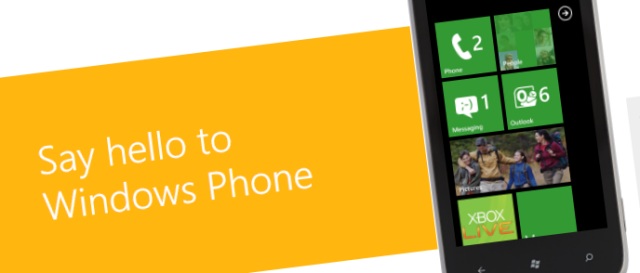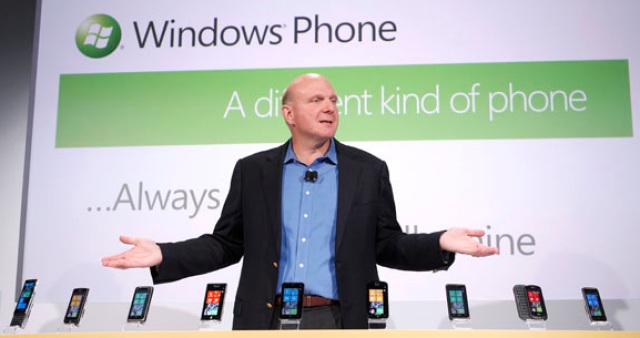Redmond’s latest foray into the mobile space is a complete re-write of their entire mobile system. While a lot of the coding lessons learned on previous versions of Windows Mobile will have been referenced by the programming team, WP7 started with a blank sheet of paper.
For quite a few commentators online, the fact that they have started again means that they will be given “the best chance to re-intent its place in the smartphone market” along with a little nudge at both RIM and Nokia/Symbian for not going with a clean sweep in their ‘new’ operating systems. Aren’t these the same people that said Palm and their brand new, clean sheet WebOS was the perfect modern mobile operating ystem and would capture the market shortly after launch? Exactly.

I think that misses the point of where Nokia was and the market conditions that they had to contend with. Every company is unique, and Nokia could not just stop and go from scratch, while still maintaining their massive market share, sales and income.
Actually, you could consider the Maemo/Meego developments as Nokia’s clean sheet start, and look how long that is taking. Do you really think the Nokia board would have stood for that delay and not have anything else on sale? Would that have been better than no 5800 and no N97? I’m sure that a lot of geek pundits would say yes to that but the 5800 and N97, and the devices derived from that base, including the likes of the X6 and the 5230, have been handsets with huge sales figures. You'd really expect Nokia to leave all of that at the door? If they were a start-up, perhaps, but they're a little bit larger than that.
Nokia had to take smaller steps and keep the market with them. Would it have been a good idea to halt Symbian development at the end of S60 3rd Edition and wait till Symbian^4? Perhaps if they, as a company, had no market share, deep pockets and Office Software sales to keep the sales figures high, or a massive VC investment, then this might have been an option, as it was for both Palm and Microsoft.
What Nokia did was that they did all their developing in public – a brave choice that can only be realistically analysed after many years (and now is still not yet the time). Starting with the N-Gage, Nokia have had various app store strategies, including experimenting with payment systems since 2004. The Ovi Music Store has built itself up to be one of the largest music stores on the planet, pushing new ways of listening and buying music; Ovi Maps not only moved the goalposts in handset navigation but meant every other player had to follow them in terms of extra services and reduced cost.
 But because the first iteration of these services were... a bit beta, the pundits moved on and never looked back - while consumers continue to flock to these services.
But because the first iteration of these services were... a bit beta, the pundits moved on and never looked back - while consumers continue to flock to these services.
Nokia had to build up the new ecosystem like Lego, piece by piece, with everyone able to examine it at every stage. Remember they had to continue to support their primary customers (the networks) and provide what they wanted, as well as keep up with the innovation. And all of this through one of the most turbulent periods in the smartphone’s short history. All this, and they continued to be the world’s largest handset vendor. That’s not an easy task, but I don't think anyone could say Nokia lost.
Where Microsoft has a big win is in the user Interface – and while it’s new to mobile, it’s not new to Microsoft, having been field tested in the Zune HD music players for the last year. This gives WP7 a superficial newness, and I expect a lot of reviews to focus on the implementation of the Metro UI and how this difference will make the phone attractive to users.
Palm's WebOS looked nice as well.
But like the school disco, there might be one pretty one that everyone flocks to, but everyone knows the real prize is always the little mouse in the corner that can really rock and roll. Nokia have a lot of mice in the corner.
Change does happen though, even in incremental parts there is always a “break” from previous versions. Symbian has already done this twice before (from EPOC ER5 to Symbian 6.0 (back in prehistoric times), and Symbian 8.1a/b to 9.1) but the upcoming break between ^3 and ^4 is hopefully going to be much smoother because of the compatibility of both Qt and Web Runtime, which should mean that developers (unless they are going a very esoteric route) won’t have to re-write their applications.

There is no right answer in how to progress a smartphone platform, and every one of the solutions carries risk. Microsoft have, given their place and perceived distance behind the front runners, gone with a clean sweep and something brand new; Google is going down a very iterative process with Android and relying on the networks and handset vendors to deal with the fragmentation issue; Apple is staying as closed as it can and focussing on a very small number of handset designs and maintaining clarity throughout the ecosystem, perhaps to the detriment of innovation; and Symbian has decided to put all their plans and forward developments out in the open to provide predictability and regular releases for anyone using the platform.
Each company realises they are different, and that what works for one of them will not necessarily work for another – and could prove disastrous if they did decide to follow someone down their own rabbit hole. Microsoft have not discovered the Holy Grail, they’ve discovered their Grail.
Its just a pity that many commentators think there is a single solution that would fit every single smartphone on the planet. Life, like planning a brand new operating system from scratch, is not that simple.
-- Ewan Spence, Oct 2010.
